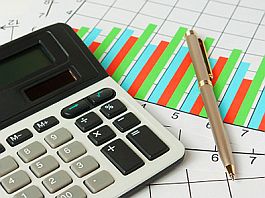Analytics, Baltic States – CIS, Economics, EU – Baltic States, GDP, Lithuania, Markets and Companies
International Internet Magazine. Baltic States news & analytics
Thursday, 25.04.2024, 08:28
Lithuania's GDP forecasted to grow by 3.2% in 2016
 Print version
Print version |
|---|
According to the Ministry of Finance, although slower economic growth is forecast compared to projections made last autumn, Lithuania will nonetheless remain among the fastest growing economies in the European Union and the euro area.
External factors that influence Lithuania's economy are currently difficult to predict and remain at a high risk. The conflict between Russia and Ukraine and reciprocal sanctions between Russia and the EU determined slower economic development of foreign trading partners of Lithuania in 2015. Cheaper energy products and weakening euro will mitigate in the short term the negative impact of external demand on Lithuania's economy and will provide a competitive advantage when trading with non-euro area countries.
Lithuanian businesses managed to mitigate the influence of the Russian embargo on certain goods of Lithuanian origin. This is proved by a 2.9% growth of real GDP in 2014 and Lithuania's trading balance data – export of goods of Lithuanian origin (excluding mineral products) to Russia fell by EUR 114 million but to other markets increased by EUR 550 million. Export to non-EU, non-EFTA (European Free Trade Association) and non-CIS (Commonwealth of Independent States) countries alone grew by EUR 173 million and fully compensated for losses in Russia.
Lithuania's GDP is forecast to grow by 3.2% in 2016, 3.5% in 2017 and 3.9% in 2018 due to projected demand growth in markets of Lithuania's main foreign trading partners, successful establishment by Lithuanian exporters in new markets, growing domestic demand and EU's economic stimulus policies.
One of the factors affecting Lithuania's economic growth is targeted EU structural fund investments. Only in 2015, a total of EUR 1.2 billion should be invested, i.e. by 20% more than in 2014.
As energy product prices have decreased, a 0.4 deflation is forecast in 2015, whereas 1.2% inflation was predicted in September 2014.
Wages are expected to rise by 4.8% in 2015, slightly slower than predicted earlier. However, pressure to raise wages will become stronger due to the demand of qualified workforce and its limited supply. In 2016 it is expected to stand at 5.3, in 2017 at 5.7, while in 2018 at 6.2%.
The number of employed persons is expected to grow in 2015-2018 by on average 0.7% per year, whereas unemployment should gradually decrease and in 2015 stand at 9.9, in 2016 at 9.1, in 2017 at 8.1 and in 2018 at 7.1%.
Wages should grow faster than inflation and will have a positive effect on people's purchasing power. In the average-term real household consumption is expected to increase by nearly 5%.








 «The Baltic Course» Is Sold and Stays in Business!
«The Baltic Course» Is Sold and Stays in Business!

